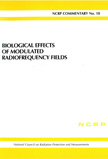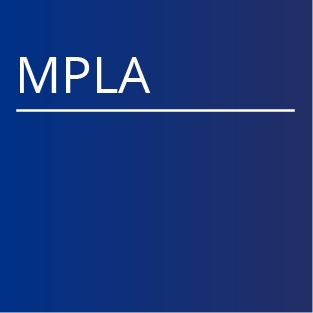AAPM has contracted with NCRP to provide each AAPM Member in good standing access and download privileges of electronically available NCRP reports, commentaries and statements. This report was prepared by the National Council on Radiation Protection and Measurements (NCRP). The Council strives to provide accurate, complete and useful information in its reports. However, neither the NCRP, the members of NCRP, other persons contributing to or assisting in the preparation of this report, nor any person acting on the behalf of any of these parties (a) makes any warranty or representation, express or implied, with respect to the accuracy, completeness or usefulness of the information contained in this report, or that the use of any information, method or process disclosed in this report may not infringe on privately owned rights; or (b) assumes any liability with respect to the use of, or for damages resulting from the use of, any information, method or process disclosed in this report.
 |
Commentary No. 018 - Biological Effects of Modulated Radiofrequency Fields (2003) Price: $30 PDF (AAPM Members FREE) Category: Commentary Commentary No. 18 (2003) examines the literature on biological effects of exposure to modulated radiofrequency (RF) energy to determine whether present exposure standards and guidelines need to be modified further to take modulation into account. Modulation occurs in a wide variety of forms specialized for radar, wireless communications, broadcast communications, and industrial processes with the result that many waveforms, pulse widths, spectral properties, and temporal patterns need consideration. In pulse modulation the RF energy is rapidly switched on and off, whereas amplitude modulation produces a continually changing level of RF energy. Frequency-modulated RF energy has signal amplitudes that remain essentially constant, but vary in frequency within some narrowly prescribed range and more closely resembles nonmodulated RF energy than pulsed or amplitude modulated RF fields. For radar, pulses generally have durations measured in fractions of a microsecond to a few microseconds. Intervals between pulses (or pulse groups) are considerably longer resulting in low duty cycle, that is, RF energy is on for a small fraction of time during each period. But pulsed signals used for communications systems can have durations in the range of milliseconds, higher duty cycles, and additional modulation features. Specialized military systems constitute a subcategory with very intense, brief pulses. The literature related to modulation-dependent effects of RF energy is a small part of the total scientific literature with relatively few experimental studies of animals that were designed to examine biological effects of electromagnetic fields as a function of modulation. However, several dozen studies in the literature were designed to permit a comparison of biological effects of pulsed versus continuous-wave RF energy in the same species. Only a few of these studies made similar direct examinations of biological effects of amplitude modulation at extremely low frequency and there are very few long-term animal studies that directly address health concerns for exposures to RF energy that is sinusoidally amplitude modulated. The results are mixed, but suggest that pulsed RF energy can be more effective in producing biological effects under some circumstances than continuous wave energy of the same average incident power density. Some questions concerning extremely low frequency amplitude modulation also remain unanswered. Most studies of pulsed RF energy involved exposures consisting of short (microsecond) pulses of comparatively high intensity, and time-averaged exposure levels that are considerably above the contemporary exposure limits. These studies do not suggest a hazard that might be present under exposure conditions allowed by the current limits. There is some evidence, both theoretical and experimental, that very intense RF pulses, which increase the temperature of tissue by several degrees within a second, can lead to adverse effects through a mechanism that relates to the rate of heating. Exposures to such pulses are, in principle, permissible under some contemporary exposure guidelines. However, such exposures are associated with specialized military weapon systems. Human beings are very unlikely to experience inadvertent exposures to such intense pulsed RF energy. Some animal studies have reported biological effects of RF energy modulated sinusoidally or by long- or short-duration pulses, sometimes at low average power levels. Unfortunately, the research on animals and cell and tissue systems exposed under these conditions is sparse and scattered over a variety of waveforms, experimental designs, animal species, and reported biological effects. Most reports have no clear relation to possible health hazards and do not suggest possible hazards from modulated RF energy at levels below present limits. A few other studies fail to demonstrate health hazards, but raise questions that are the subject of current research. Biophysical considerations do not suggest a plausible basis for hazards from electromagnetic fields at exposure levels below present limits that are associated with modulation, with the possible exception of very intense RF pulses. This Commentary concludes that the scientific literature related to modulation-dependence of biological effects of RF energy is not sufficient to draw any conclusions about possible modulation-dependent health hazards of RF fields, nor is there any apparent biophysical basis from which to anticipate such hazards apart from exposure to very intense RF pulses produced by some specialized military equipment. Scientific Committee: Om P. Gandhi, Chairman John D'Andrea Kenneth R. Foster Arthur W. Guy Don R. Justesen Indira Nair Asher R. Sheppard |



















